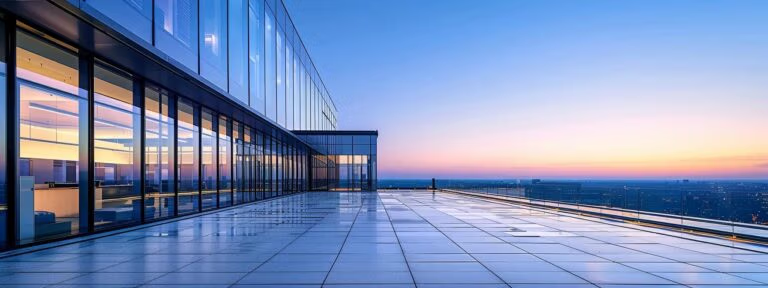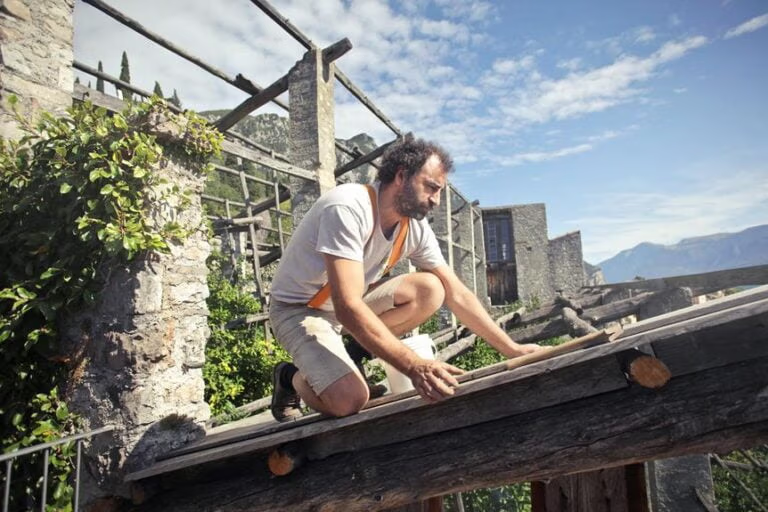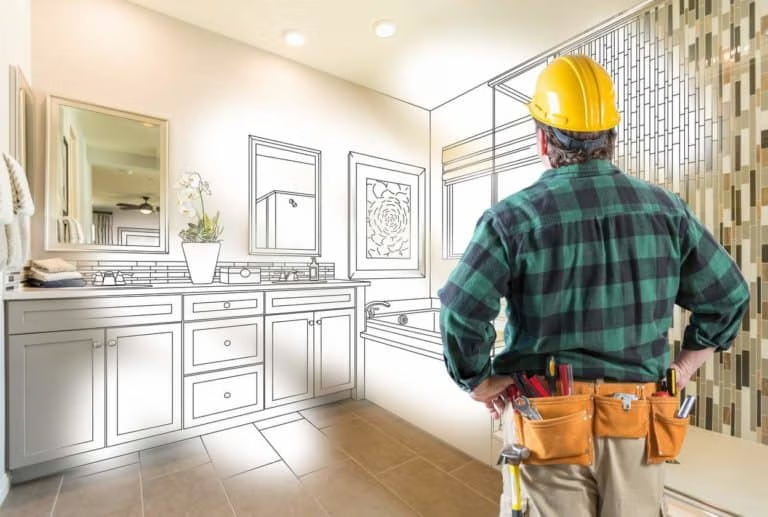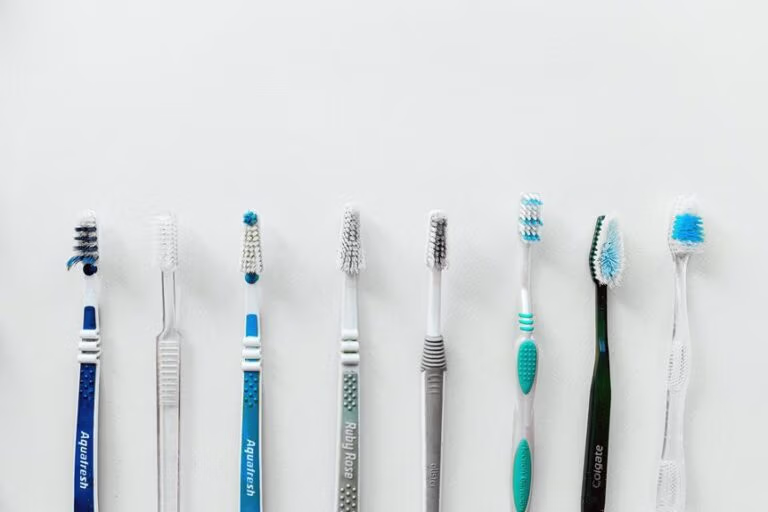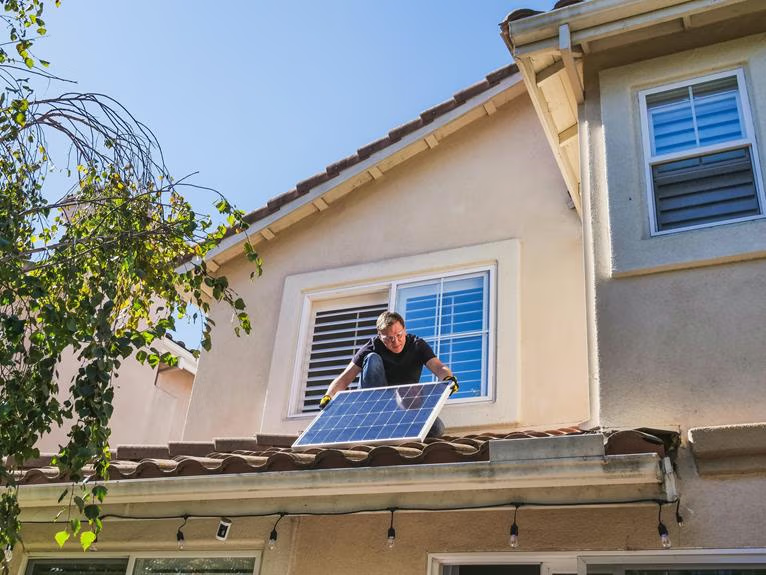Table Of Contents:
- Benefits of Green Roofing for Commercial Buildings
- Explore the Environmental Advantages of Green Roofing for Homes
- Discover Economic Benefits of Implementing Green Roofing Systems
- Examine the Aesthetic Improvements Offered by Green Roofs
- Understand the Installation Process of Green Roofing Systems
- Investigate How Green Roofs Mitigate Stormwater Runoff
- Analyze the Health Benefits Associated With Green Roofing
- Frequently Asked Questions
- Final Thoughts
Benefits of Green Roofing for Commercial Buildings
Green roofing is revolutionizing the way we approach building design and urban development. As a roofing contractor with decades of experience, I have seen firsthand how green roofs are transforming commercial buildings into sustainable, energy-efficient, and aesthetically pleasing structures. In fact, many commercial roofing contractors now advocate for green roof systems in both new and renovated constructions. Green roofs, which incorporate vegetation on top of a building’s roof system, are not only beneficial for reducing energy consumption and managing stormwater but also play a significant role in mitigating climate change by reducing greenhouse gas emissions. In today’s cost-conscious and environmentally aware market, commercial building owners are turning to green roof solutions to improve property values, enhance building insulation, and promote a healthier urban ecosystem.
This article will delve into the multifaceted benefits of green roofing for commercial properties. We will explore the environmental advantages that these systems offer, including their impact on urban air quality, biodiversity, and energy conservation. We will also examine the economic benefits of installing green roofs, such as reduced energy bills, potential tax incentives, and increased property values. Additionally, the aesthetic improvements provided by these systems are significant, contributing to the overall architectural beauty and urban heat reduction. Furthermore, I will explain the installation process, necessary materials, maintenance practices, and the way green roofs mitigate stormwater runoff and promote better indoor and psychological health. Let’s now explore each of these areas in detail.
Explore the Environmental Advantages of Green Roofing for Homes
Green roofs offer substantial environmental benefits, making them a key component of sustainable architecture. One primary advantage is their contribution to improved urban air quality. The vegetation on green roofs acts as a natural filter, absorbing airborne pollutants and dust particles, which is particularly important in densely built urban areas. Studies indicate that installing green roofing systems can decrease ambient particulate matter by up to 15%, leading to a cleaner atmosphere.
Another critical environmental benefit is the enhancement of biodiversity and wildlife habitats. By transforming sterile rooftop surfaces into mini-ecosystems, green roofs provide refuge for various flora and fauna. Native plant species, insects, and even birds find shelter on green roofs, thereby promoting local biodiversity in cities where natural habitats are scarce. This process helps counteract the negative impacts of urban sprawl by reintroducing natural elements into built environments.
Green roofs also play a pivotal role in reducing energy consumption in buildings. The insulation provided by a layer of soil and vegetation decreases the need for excessive air conditioning in the summer and heating in the winter. Studies by the University of Tokyo have demonstrated that green roofs can reduce energy usage in buildings by 25% by stabilizing roof temperature under different weather conditions. Additionally, green roofs mitigate the urban heat island effect, a phenomenon where cities experience higher temperatures than rural areas due to concentrated building materials and human activities. Through evapotranspiration and shading, green roofs decrease surface and ambient temperatures, thereby contributing to overall energy conservation in urban settings.
Furthermore, green roofs are an integral component of sustainable water management. They absorb and delay rainwater runoff, reducing the burden on urban stormwater systems and lowering the risk of flash flooding. This capability is crucial, particularly in regions prone to heavy rainfall and flooding. By integrating such green infrastructure, commercial buildings contribute to a more resilient urban ecosystem, capable of adapting to climate change challenges.
In summary, green roofs not only contribute significantly to energy conservation and improved air quality but also bolster urban biodiversity and effective stormwater management. The environmental benefits of green roofing extend beyond the individual building, creating a ripple effect that enhances whole urban communities.
Discover Economic Benefits of Implementing Green Roofing Systems
The economic advantages of installing green roofing systems are compelling and extend far beyond the initial installation cost. One of the primary financial benefits is the reduction in energy bills. Green roofs provide an extra layer of insulation, which helps maintain a consistent indoor temperature. This insulation minimizes the need for artificial heating during the cold months and reduces the reliance on air conditioning during the warmer months. For commercial buildings, this energy efficiency translates into significant cost savings over time. Industry case studies have shown that energy bills can be cut by as much as 30% when switching to green roof solutions, which directly boosts the building’s operational profitability.
Another economic advantage is the potential for tax incentives and rebates. Many governments offer financial incentives to businesses that invest in sustainable and energy-efficient infrastructure. These incentives, including tax credits and grants, help offset the installation costs of green roofs, making them a more attractive investment. For example, in certain regions, commercial building owners have been able to recoup up to 20% of their installation costs through government programs aimed at promoting renewable energy and sustainable urban development.
Furthermore, green roofs can significantly increase property values. Studies have shown that buildings with green roof installations are valued at a premium compared to those with conventional roofing systems. This increase in property value stems from the long-term savings associated with reduced energy costs, lower maintenance expenses, and enhanced aesthetic appeal. Commercial real estate markets have demonstrated a trend where sustainability features are a critical factor in property evaluations, thereby providing a competitive edge in the marketplace. The visual appeal of a green roof, combined with its functionality, attracts environmentally conscious tenants and investors alike.
Additionally, green roofs contribute to the longevity of the roofing material. By shielding the roof from direct exposure to ultraviolet radiation, storm impacts, and extreme weather conditions, green roofs extend the lifespan of the building’s roof. Longer-lasting roofs translate into lower maintenance and replacement costs for property owners, thereby adding another layer of economic benefit.
I also want to point out that green roof systems can serve as a marketing tool. In today’s eco-aware marketplace, a commercial building that features green infrastructure stands out and can command higher lease rates or attract high-profile tenants looking for sustainable office spaces. This branding advantage further amplifies the economic benefits by promoting a positive corporate image and customer loyalty.
To summarize, the economic benefits of green roofing extend well beyond operational cost savings. They encompass tax incentives, increased property values, prolonged roof lifespan, and even enhanced marketability—all of which contribute to a robust return on investment. By integrating green roof solutions, commercial building owners not only champion sustainability but also secure long-term financial advantages in an increasingly competitive market.
Examine the Aesthetic Improvements Offered by Green Roofs
Aesthetic considerations form an essential part of any commercial property renovation, and green roofs provide substantial improvements in this regard. First and foremost, green roofs contribute significantly to architectural beauty. The integration of vibrant vegetation and natural elements on high-rise structures transforms barren roofs into lush, dynamic landscapes. This not only enhances the visual appeal of the building but also demonstrates a commitment to environmentally sustainable practices. A commercial building with a green roof becomes a landmark, attracting attention through its innovative design and bringing an element of nature into the urban environment.
Moreover, there are numerous landscaping options available for green roofs that allow architects and building owners to tailor the design to their specific aesthetic vision. Options range from native wildflower meadows and ornamental grasses to succulents and small shrubs. Each plant type offers unique textures, colors, and seasonal changes, allowing the roof design to evolve over time. For instance, a green roof planted with a mix of perennial wildflowers and grasses not only provides year-round greenery but also adds a burst of color during blooming seasons, further enhancing the building’s curb appeal. These design choices ensure that the green roof complements the building’s overall architectural style and adds a refreshing contrast to conventional rooftop designs.
In addition to beautification, green roofs play a vital role in reducing urban heat, which indirectly contributes to enhanced aesthetics. By lowering the ambient temperature around the building, green roofs create a more pleasant microclimate that benefits both occupants and passersby. This decrease in temperature can reduce the glare and harsh reflections on building surfaces, contributing to softer, more inviting urban landscapes. Furthermore, the presence of a green roof can act as a natural backdrop for art installations and modern architectural features, providing endless possibilities for creative expression.
A striking example of aesthetic improvement is the integration of green roofs in urban renewal projects. In cities like New York and Chicago, commercial and residential buildings outfitted with green roofs have revitalized neighborhoods and contributed to a more vibrant, cohesive community identity. The intentional design of these green spaces ensures that they serve both an environmental function and an artistic purpose, ultimately merging practicality with beauty.
Additionally, incorporating green roofs into a commercial property can lead to enhanced outdoor spaces that contribute to employee well-being and customer satisfaction. The presence of natural, landscaped areas provides a soothing retreat in an otherwise harsh urban setting, encouraging social interaction and boosting morale. By transforming flat roof spaces into inviting gardens or recreational areas, building owners can provide added value that extends beyond the structural itself.
In conclusion, the aesthetic improvements offered by green roofs are multifaceted and impactful. They enhance architectural beauty, offer diverse landscaping options, and contribute to a softer urban environment. As commercial buildings seek to make a visual statement that aligns with sustainable practices, green roofs offer a transformative solution that marries beauty with functionality.
Understand the Installation Process of Green Roofing Systems
The process of installing a green roof requires careful planning, specialized materials, and expert installation practices. First, it is essential to evaluate and select the proper materials needed for an effective green roof. The foundation of any green roofing system includes multiple layers: a waterproof membrane, a root barrier, a drainage layer, a filter fabric, and a growing medium composed of engineered soil. Each layer serves a critical function in ensuring that the roof not only supports vegetation but also remains durable and leak-proof over time. For example, the waterproof membrane is crucial to prevent water penetration, while the drainage layer helps manage excess water during heavy rains, reducing the risk of structural damage.
Once the materials are selected, the next step involves preparing the building for the installation of the green roof. This process requires a thorough inspection of the building’s structural integrity to ensure that it can support the additional weight of the green roof system. Roof reinforcements or modifications might be necessary, particularly for older buildings or those not originally designed to support high loads. After ensuring that the structural elements are sound, contractors begin by installing the waterproof membrane, followed by the root barrier which protects this membrane from potential damage caused by penetrating root systems. Subsequently, the drainage layer and filter fabric are placed, culminating in the addition of the growing medium, carefully distributed to support healthy plant growth.
Maintenance practices are equally critical to the sustainability of a green roof. Regular inspections are essential to address issues such as plant overgrowth, water retention imbalances, or membrane breaches. Routine maintenance tasks include weeding, fertilizing, and monitoring moisture levels in the growing medium. In commercial settings, maintenance contracts with specialized roofing companies ensure that green roofs remain healthy and vibrant over their lifespan. Many innovative roofing companies now offer eco roof solutions that combine advanced technology with sustainable practices to streamline maintenance and monitor real-time performance data.
A detailed project case study from a leading roofing contractor demonstrated that a commercial green roof installation could be completed within a 4- to 6-week timeframe, including both the preparation phase and proper plant establishment. This timeline accounts for the careful layering of materials, installation of the drainage systems, and final planting. The investment in time and resources is offset by the extended lifespan of the roof and substantial savings in energy costs, making the installation process a sound economic decision.
To encapsulate, the installation process of green roofing systems is a comprehensive and technical procedure that requires meticulous material selection, thorough building preparation, and a dedicated maintenance plan. By following each step carefully, roofing contractors can install systems that not only meet environmental standards but also provide long-term economic, aesthetic, and functional benefits to commercial properties.
Investigate How Green Roofs Mitigate Stormwater Runoff
One of the most noteworthy environmental functions of a green roof is its ability to mitigate stormwater runoff. The primary benefit is that green roofs significantly reduce the quantity and rate at which rainwater flows off the building’s surface. By absorbing and retaining a substantial portion of rainfall, the vegetative layer and soil substrate decrease the peak runoff volume that typically overwhelms urban stormwater systems. For instance, studies have shown that green roofs can capture up to 80% of precipitation during a rain event, thereby reducing the burden on municipal drainage systems and lowering the risk of flooding in urban areas.
Green roofs achieve these results through several mechanisms. Firstly, the growing medium acts as a sponge by absorbing rainwater and releasing it slowly into the roof assembly or building drainage system. Secondly, the living plants contribute to this process via evapotranspiration, where water absorbed by the plants is released back into the atmosphere as vapor. This dual function of water retention and gradual release ensures that water is managed effectively, preventing rapid surges that can lead to erosion or damage.
The benefits extend to reducing erosion risks as well. By holding the soil in place, the vegetation minimizes the displacement of substrate during heavy rainfalls, which decreases both the sediment load and the potential for soil loss. Moreover, the incorporation of a well-designed stormwater retention system, such as additional underlayment or built-in reservoirs in the roof structure, further enhances the mitigative effect of green roofs. This system is particularly relevant for buildings located in regions with combined sewer systems, where excessive runoff can lead to sanitary sewer overflows and water pollution.
Commercial buildings with green roofs have reported fewer maintenance issues related to water damage and reduced costs associated with water management. Furthermore, municipalities have started to recognize green roofs as essential elements in urban infrastructure, offering incentives for installations that improve stormwater management and contribute to overall urban resilience. Research published in the Journal of Environmental Management (Sailor, 2020) detailed how green roof systems provided up to a 75% reduction in runoff volumes, quantifying the long-term benefits such as reduced flood risk and minimal infrastructural strain during large rain events.
In addition to these practical benefits, an effective green roof design that mitigates stormwater enhances the overall sustainability of a property. Business owners and facility managers can directly observe the environmental impact of reduced runoff, leading to fewer issues with local water authorities and thereby contributing to a cleaner urban environment.
Overall, green roofs offer a reliable and sustainable solution to managing stormwater runoff in commercial buildings. By absorbing rainfall, reducing peak flow, and preventing soil erosion, these systems not only safeguard the structural integrity of buildings but also contribute significantly to addressing broader ecological challenges such as flooding, water pollution, and urban heat islands.
Analyze the Health Benefits Associated With Green Roofing
Beyond their environmental and economic advantages, green roofs have profound health benefits for building occupants and the surrounding communities. One of the primary health benefits is the improvement in thermal comfort indoors. Green roofs act as additional insulation between the interior of the building and the often extreme outdoor temperatures. The combination of a vegetative layer and soil minimizes heat transfer, thereby reducing the reliance on climate control systems such as air conditioning. This leads to improved indoor temperature stability, reducing thermal discomfort and energy consumption—a benefit that is supported by research from the American Society of Heating, Refrigerating and Air-Conditioning Engineers (ASHRAE).
Additionally, green roofs contribute to psychological well-being. Exposure to nature, even in minimal forms like rooftop gardens, has been shown to reduce stress and anxiety levels, leading to enhanced mental clarity and overall cognitive function. Plant-rich environments promote a sense of calm, and the visual stimulation provided by lush greenery helps combat the monotony and stress typical of urban environments. Studies have consistently indicated that access to natural elements leads to increased productivity and improved emotional balance. Research by Ulrich (1991) noted that natural environments can reduce stress levels by influencing cortisol patterns, thereby promoting restorative mental states.
Furthermore, green roofs contribute to healthier living environments by filtering air pollutants. The vegetation not only absorbs carbon dioxide but also traps particulate matter and other air pollutants, leading to improved air quality both on the rooftop and in the surrounding urban area. This enhanced air quality is particularly beneficial in densely populated commercial districts where pollutants from vehicles, industrial activities, and construction are at high levels. Improved indoor and outdoor air quality directly correlate with lower incidences of respiratory issues and allergies—benefits that have been backed by peer-reviewed studies in environmental health journals.
Another significant health benefit is the positive impact on the built environment. The cooling effect of green roofs helps reduce the urban heat island phenomenon, which in turn lowers the ambient temperature in urban areas. This effect not only benefits those within the building but contributes to a healthier external environment by decreasing the intensity and frequency of heat-related illnesses during summer months. Additionally, green roofs help mitigate noise pollution by providing a sound-dampening layer, creating a quieter, more peaceful work environment.
Employing green roofing can also lead to indirect health benefits through improved energy efficiency. Lower energy consumption reduces the amount of greenhouse gases emitted by power plants, indirectly contributing to less air pollution and better public health outcomes. As more businesses adopt green roof solutions, the cumulative effect is a reduction in urban air pollution levels, which has been linked to decreased rates of cardiovascular and respiratory diseases.
In conclusion, the health benefits of green roofing are extensive and multifaceted. From enhancing thermal comfort and improving indoor air quality to reducing stress and mitigating urban heat islands, green roofs contribute to a healthier environment for everyone—from building occupants to the broader urban population. The integration of green roofs into commercial properties is a step toward healthier urban living and a more sustainable future.
Frequently Asked Questions
Q: How do green roofs improve urban air quality?
A: Green roofs enhance urban air quality by absorbing pollutants and particulate matter through their vegetative layers, acting as natural filters. This process not only reduces contaminants in the air but also contributes to lower ambient temperatures, making the environment healthier for urban populations.
Q: What are the cost benefits of installing a green roof on a commercial building?
A: Installing a green roof reduces energy costs by providing additional insulation, decreases maintenance expenses by prolonging roof life, and often qualifies for tax incentives or rebates. Increased property values and improved marketability also lead to long-term financial gains for commercial property owners.
Q: Do green roofs help manage stormwater runoff effectively?
A: Yes, green roofs are highly effective in stormwater management; they absorb and retain rainwater, reducing peak runoff and mitigating the risk of urban flooding. The layers of soil and vegetation work together to slow down water flow, thereby decreasing the burden on urban drainage systems.
Q: What maintenance practices are required for a green roof?
A: Maintenance for a green roof involves regular inspections, weeding, replanting, and monitoring of moisture levels in the substrate. Contractors should schedule periodic check-ups to ensure that the waterproof membrane and all layers function correctly, thereby extending the roof’s lifespan and maintaining its environmental benefits.
Q: Can green roofing improve the health of building occupants?
A: Absolutely. Green roofs improve indoor thermal comfort, enhance air quality by filtering pollutants, and reduce stress levels through the presence of natural elements. These factors collectively contribute to a healthier indoor environment, boosting overall occupant well-being and productivity.
Q: Are there any studies supporting the environmental benefits of green roofs?
A: Yes, multiple peer-reviewed studies support the environmental benefits of green roofs. For instance, research published in the Journal of Environmental Management has shown that green roofs can capture up to 80% of rainwater during precipitation events, significantly reducing runoff and urban heat island effects.
Q: How long does it take to see the benefits of a green roof installation?
A: While energy savings and improved air quality can be observed almost immediately, the full benefits—such as enhanced biodiversity and significant energy conservation—may take several months to a year as the vegetation matures and the system stabilizes.
Final Thoughts
Green roofing for commercial buildings offers a compelling blend of environmental, economic, aesthetic, and health benefits. By reducing energy consumption, lowering stormwater runoff, and enhancing property value, green roofs provide a robust long-term return on investment. Their aesthetic contributions and positive impacts on occupant health serve as strong incentives for building owners to adopt these innovative systems. As more businesses prioritize sustainability, the future of urban architecture will increasingly reflect the natural, green solutions pioneered by green roofing technology.

